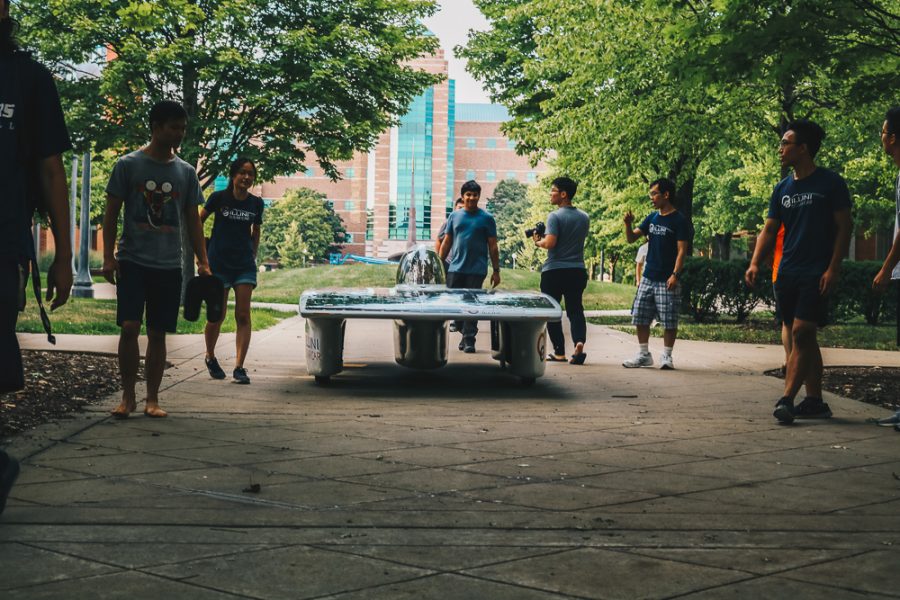Solar car ‘Argo’ races across Australia
Photo Courtesy of Jonathan Mullen
Illinois’ solar car team recently returned with its car, Argo, after a cross-country race in Australia. The team hopes to compete this summer in the American Solar Challenge.
Nov 15, 2017
The University solar car team dreamed of driving through the outback in Australia.
“It was a unique experience. I had never been to that side of the world before,” said Byron Hopps, senior in Engineering.
The Bridgestone World Solar Challenge ended around three weeks ago with great results for Argo, the solar car created by a team of engineers and experts at the University.
Jonathan Mullen, president of the team, said in an email Argo drove more than 1,000 kilometers over the course of the race. He also said that the Argo weighed in at 224 kilograms (494 pounds), 4.8 meters (16 feet) long, and 1.8 meters (6 feet) wide with a solar array of 6 square meters (65 square feet) with an efficiency of 23.7 percent.
“We were able to drive 1,000 kilometers, which is very impressive, especially for a first-time team like us that’s never raced before and never built a car before,” Hopps said.
Get The Daily Illini in your inbox!
The race involves driving in segments with a few hours allocated toward charging the car. Teams must reach the checkpoints, 10 in total, by certain times to move forward. The race began in Darwin and ended in Adelaide. Argo successfully crossed the finish line.
“It’s an endurance race. If you survive to the end, that’s a feat in itself,” Derek Chou, graduate students in Engineering, said.
The race began with obstacles, as Argo was damaged through shipping. Some bolts on the suspension were broken. Team members replaced the bolts and modified the height of the car to decrease the forces exerted on the bolts.
“When I got there, it was pedal to the metal for everybody. Everybody was working all the time,” Chou said.
Even in the midst of the hectic schedule closer to the race, the team found time to interact with other competitors.
“There were other U.S. teams,” Chou said. “For fun, we talked to them. There were also teams from Turkey, U.K., Australia and Taiwan.”
Hopps recounted an American team barbecue, where they got to meet the Stanford, Michigan, Minnesota, Mississippi, Iowa and Illinois State University teams.
Future plans for Argo involve competing in the American Solar Challenge this upcoming summer. The overall logistics are the same as the World Solar Challenge, except the team needs to reach all checkpoints with the best additive time wins.
“This will be interesting because there will be mountains in the way and solar cars are more designed for flatness. So uphill you really do see the power numbers,” Hopps said. “Being able to maintain this uphill climb for long distances will be a challenge, so I’m looking forward to that.”
Hopps expressed gratitude to the sponsors that enabled the team to compete in the World Solar Challenge, including the Student Sustainability Committee, Engineering Council, Department of Electrical Engineering, the University for providing insurance and plane tickets and other sponsors.
“I’m really grateful that we made it happen, that we managed to build a car and also for the people who were sponsors and helped us make this happen,” Hopps said.






